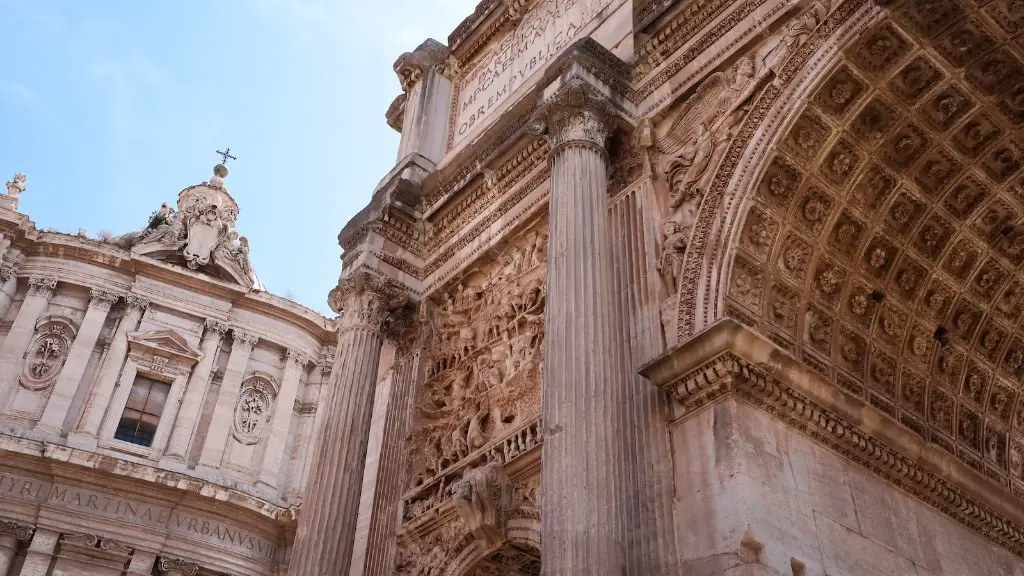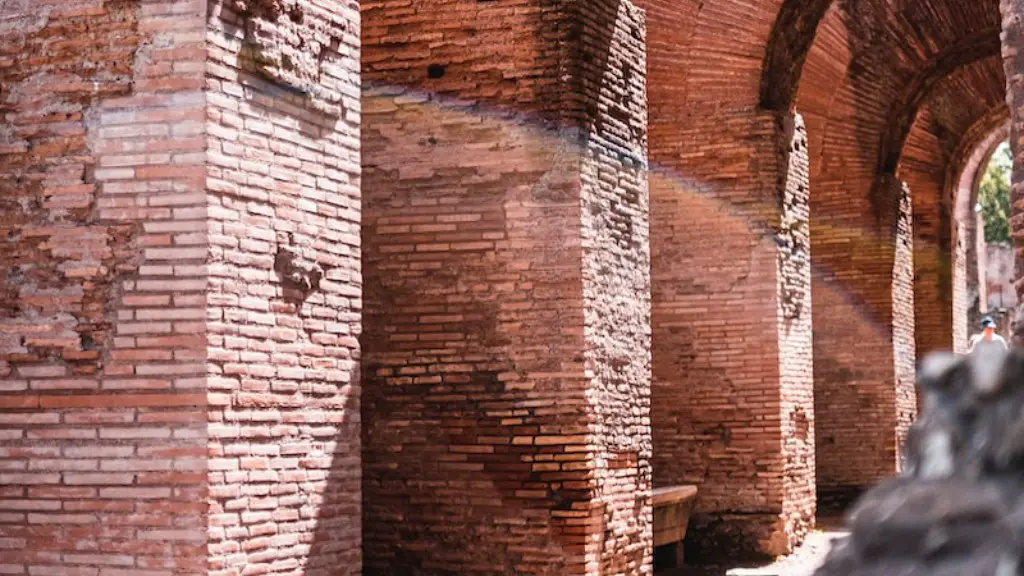What is the Climate Like in Ancient Rome?
Rome was a city famous for its stunning architecture and bustling populations, but what was the climate actually like in the days of ancient Rome? With the Mediterranean to the south and the Apennine Mountains to the north, the city of Rome was situated in a rather comfortable and temperate climate, allowing it to become one of the world’s biggest cities in its time.
The weather in ancient Rome was generally mild all year round, with temperatures ranging from a cold winter average of 7 degrees Celsius to a warm summer average of 27 degrees Celsius. These temperatures are due mainly to the city’s proximity to the Mediterranean Sea, which only further increases the humidity in the air.
Most of Rome’s rainfall can be attributed to the winter months of December, January and February. Despite this, snow does make an appearance every now and then, though not for very long periods of time. Additionally, Rome experiences frequent thunderstorms during the spring and summer months. The rains usually pass quickly, however, given Rome’s location at the bottom of a valley.
Experts say that this moderate climate made Rome especially suited for the growth of cities and civilization. This is due in part to Rome’s fertile soil, which was very conducive to plant-growing – a necessity for any burgeoning empire.
In addition to its ideal temperature, ancient Rome had reasonably lengthy growing seasons, which could typically last up to six months. This meant that many different types of fruits and vegetables thrived in the region. Overall, this combination of mild temperatures and longer growing seasons enabled Rome to feed its hungry population for centuries.
Although the Romans didn’t have the same access to climate data that we do today, evidence from ancient coins and artwork suggests that the city’s climate has kept fairly consistent over the years. The abundance of shady trees in the area is just one visible sign of Rome’s moderate climate.
The temperate climate of ancient Rome made it an ideal destination for a variety of cultures and civilizations. It was this combination of comfortable temperatures and ample food supply that allowed the city to thrive for so many centuries.
The Lasting Effects of Ancient Rome’s Climate
Due to its long history, ancient Rome has left a lasting mark on the world’s climate. Today, the modern city of Rome still experiences the same pleasant temperatures and suitable growing seasons that made it an ideal location for an empire in the past.
In fact, many of the plants that were introduced to the region by Roman settlers are still present to this day. This includes a variety of herbs, fruits and vegetables. The combination of temperate climate and delicious Roman food has made the region a popular tourist destination.
In addition to its plant life, Rome still experiences its fair share of rainfall. It is believed that the city’s mountainous terrain acts as a rain collector, resulting in the aptly named “Roman Storms”. These frequent thunderstorms provide Rome with its beautiful landscapes and refreshing rains.
In terms of its climate today, Rome is often seen as a “temperate paradise”, with temperatures rarely ever dropping to extreme lows or highs. This is believed to be one of the few positive effects of global warming, as temperatures have become warmer on average compared to earlier years.
The city also experiences a significant drop in temperatures during the winter months, providing locals and visitors alike with a refreshing break from the summer heat. Along with this, Roman winters have become remarkably dry in recent years, making it the perfect season for outdoor activities.
An Increased Risk of Natural Disasters
Although the Mediterranean climate in Rome is generally mild and pleasant, it is not without its risks. One of the main concerns is the risk of flooding and landslides, particularly during the wet seasons. Rome is no stranger to these types of disasters, as heavy rainfall has been known to cause a significant disruption to life in the city.
As a result, the region has seen an increase in the number of projects focusing on flood prevention and flood management. Such projects involve installing dams and irrigation systems, as well as planting trees and shrubs to promote water absorption. The Rome city council is also formulating plans to better protect the wetlands and other natural habitats in the area.
Apart from flooding, Rome is also prone to earthquakes. These can happen at any time, though especially during the rainy season. As such, it is important for locals and visitors alike to be educated and prepared in case of an earthquake.
The Italian government has put several measures in place in order to minimize the risk of earthquakes and other natural disasters in Rome. This includes the establishment of a network of seismic detectors throughout the city, as well as the implementation of strict building regulations in order to ensure the safety of the citizens.
The Long-Term Effects of Global Warming
With the increased risk of natural disasters and the threat of global warming, the effects of the climate in ancient Rome may be seen for many years to come. Rising temperatures and changing weather patterns are among the most concerning long-term effects of climate change.
While Rome is a generally temperate region, it is also highly susceptible to heat waves and droughts. This means that even the slightest rise in temperatures can have a drastic effect on the environment. Increased temperatures can also cause sea levels to rise, which can further reduce the amount of usable land.
Furthermore, the rise in global temperatures can also lead to an increase in the number of natural disasters in the region. As stated earlier, Rome is no stranger to flooding and landslides, and such events will become more frequent and destructive if nothing is done to stop climate change.
Therefore, it is important to take action now in order to mitigate the long-term effects of global warming. Such actions include conserving energy, reducing emissions, planting more trees and protecting natural habitats.
How Can We Help?
As citizens of the world, it is up to us to help protect and preserve the famed climate of ancient Rome. This can be done in a number of ways. First and foremost, we must reduce our carbon footprint by making changes to our everyday lifestyles. This includes limiting the amount of energy consumed, using better transit options and eating sustainably.
However, we can also take a direct approach by actively helping to protect the environment around us. This could involve volunteering with an environmental organization, taking part in beach clean-ups or even donating to a cause you believe in. Every bit helps make a difference.
We can also help to raise awareness about the causes and effects of climate change by encouraging our friends and family to take action. Education about the environment and its importance is key to making a lasting change.
Conclusion
From its mild temperatures and lucrative growing seasons to its frequent rainfall, ancient Rome is a reminder of the beauty of nature and the importance of protecting our environment. As citizens of the world, it is up to us to ensure that the climate of ancient Rome is preserved for generations to come.





